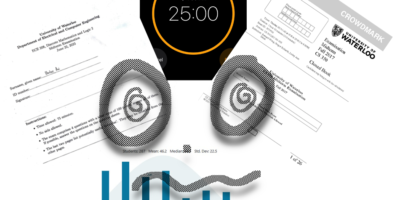Perhaps I am in the minority when I say this, but The Legend of Zelda franchise has always been the face and heart of Nintendo games for me, far ahead of Mario Brothers-related games. Zelda just always offered so much more character and life than the platforming I saw in Mario, and for that reason it became a cult classic of our generation. And of course, as with all series, the hottest topics of discussion are usually pertaining to “which is the best”. With the newest entry in the series, Breath of the Wild, many people are rushing to hail it as Game of the Year – and possibly the best game ever made. However, with neither myself nor Donovan having that game, we won’t be talking about that particular title. Instead, we will be focusing on two earlier entries.
PCP: Majora’s Mask is the Best Legend of Zelda Game
My choice for defending Majora’s Mask is also somewhat of an odd choice for any of you who know me, as I have been (and always will be) a big lover of the old 2D, top-down Zelda games from the ages between the original NES and the last entry — A Link Between Worlds — on the Nintendo 3DS. This comes largely from my fan of the dungeon and overworld mechanics that come from these games – in particular, what I consider to be true “puzzles” (i.e. figuring out what specific events of moving blocks, switching switches, or other deliberate choices are needed to make a specific outcome take place). For this reason, the 2D Zelda titles have always offered me more of a challenge than the 3D entries, at least in terms of dungeons.
However, it seems almost like an apples-to-oranges comparison in my books to try to compare entries like Oracle of Ages to Twilight Princess, since the great aspects of the two games don’t line up. Instead, I’ll talk about a game I completed only a few weeks ago, in its 3DS remake since I was a sad child and never had an N64. It is my boyfriend’s personal favourite Zelda title, and perhaps one of his favourite games of all time – and after playing it, I can see why.
Many people give the title of “Best Zelda” to Ocarina of Time, the predecessor to Majora’s Mask, for how revolutionary it was for gaming at the time. However, the changes and gameplay of Majora’s Mask I think would be considered revolutionary even if they were released today. It breaks away from so many of the staple “Zelda-isms” in a way that is both utterly refreshing and rather unsettling for veterans of the series.
For those unaware, the game revolves around the premise of an imp known only as “Skull Kid” being possessed by the titular Majora’s Mask, bringing about the end of the world in a mere three days by crashing down the Moon right atop the poor little Clocktown. In order to save the world, however, you are going to need more than just three days, and so with your magical wind instrument you end up constantly turning back the clocks and repeating the same three days again and again and again until you have all of the tools and allies you need to put the moon back where it belongs.
While this premise could have been executed horribly, instead the game prioritizes this entire mechanic by packing those three days full of content – and I mean PACKED. With each time you complete the three days, you learn something new about the events of the world and the inhabitants that live in it. It becomes a little bit like a solving a murder-mystery, finding clues about earlier events in later days, which can be used to completely change the course of events the next time you travel back in time. Yes, time paradoxes not withstanding. Who needs ‘em.
This comes in part with the game having a bit of an odd design compared to other Zelda games – I’ve heard that the original working title of the game was something along the lines of “The Legend of Zelda: Sidequest”, showcasing the emphasis that the game developers wanted to create a world deep with exploration, in lieu of a traditional linear adventure that starts and ends with the main plot. By Zelda standards its game is very short, plot-wise, with only four dungeons to complete before going to face the big baddie and saving the world (in comparison to the typical six to nine dungeons of other entries).
The shift in priority from main plot to side questing isn’t the only huge shift that separates Majora’s Mask from other entries in the Zelda series. Perhaps the most famous difference was the game’s incredibly dark nature, featuring some of the most creepy events and characters in the franchise. This is, again, linked to the game’s premise of an approaching apocalypse, mirrored in the change in mood across the three days – villagers inside of Clocktown go from happily preparing for an upcoming festival to eventually abandoning the city altogether in a mass panic of their upcoming doom. Death is also a frequent visitor, and not in the “disappear offscreen so maybe I survived” variety either. Characters dying in the game actually is the root of Majora’s Mask second key mechanic, the masks. Which, by the way, is pretty cool that a game has two unique key mechanics. Most other Zelda entries only have one.
The majority of the masks you attain in-game (twenty-four in total) come via side quests, and all have unique uses which tend to be quite fun. This makes up for the lack of unique items you are used to getting in dungeons, as you essentially have four versions of Link to play as (default, Deku, Goron, Zora) with even MORE tools at your disposal when using non-transformation masks. That’s an unprecedented amount of flexibility in-game with your tools.
I could talk for ages about some of the more deeper themes in Majora’s Mask implied throughout the game’s events – like the constant references to childhood vs adulthood — but that would take much longer than the word count I have left in this little PCP. Suffice it to say that is has potentially the most artistic depth of any of the Zelda games that I have played. It’s bar-none one of the most phenomenal Zelda games of all time, and in my humble opinion outshines not only its predecessor, but will stand the test of time as one of the most dramatic and revolutionary titles in the series.




uoultima
Ocarina of Time definitely the best Zelda, followed by Majora’s Mask. Ocarina of Time brings back such great memories(so does MM, but not near as much as OoT) and wish they would do a full remaster…not touch anything except make the graphics amazing and maybe add a lil extra stuff that only compliments the game and doesnt ruin or take away from the masterpiece it is…same with majora’s mask…would be a dream come true for these 2 to be remastered, but most of all ocarina of time. Of course everyone is entitled to their own opinion and i respect yours but OoT is, by far, the best Zelda(my opinion again).